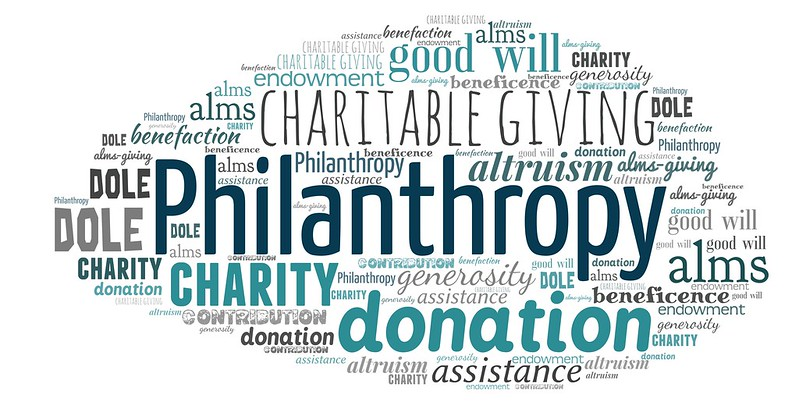Talk now, avoid conflict later: Openness and transparency are essential as philanthropic support for journalism becomes more widespread


By April Lindgren, professor at the School of Journalism at Toronto Metropolitan University and principal investigator for the Local News Research Project.
There is growing recognition in the philanthropic sector that journalism produced in the public interest is part of the critical infrastructure of communities, just like schools and hospitals (Hazeltine, 2020). In addition to supporting democracy through reporting on decision-making by the powerful, journalism that is verified, timely and independently produced plays an essential role in helping people navigate daily life and ensuring institutions work in the public interest.
News organizations in this country, meanwhile, are increasingly in need of more diverse revenue sources as advertising dollars disappear (Lindgren et al., 2022). Philanthropic support is one of those new revenue sources.
As with any new relationship, tensions are bound to emerge as funders and journalists get acquainted. But research and experience on the ground in the United States, where philanthropic support for journalism is so much more advanced, suggest openness and transparency can do much to ease those tensions.
In 2021 alone, tracking by Media Impact Funders documented 624 grants related to journalism, news and information from 108 U.S. philanthropic funders (Media Impact Funders, n.d.). That list continues to be updated, but as of the end of August, $151.7 million in grants had been approved for everything from investigative reporting projects and journalism schools to general news coverage and advocacy reporting. Membership in the Institute for Nonprofit News has surged in recent years and now exceeds 400 independent news organizations (Institute for Nonprofit News, 2022).
In Canada, by comparison, philanthropic support for journalism has been limited and hamstrung by tax rules. The situation improved somewhat with the introduction in 2020 of new Canada Revenue Agency rules that allow non-profit news outlets to apply for status as registered journalism organizations (Government of Canada, 2021). Successful applicants – to date there are just eight (Government of Canada, 2022) – are exempt from taxes, can issue donation receipts for gifts, and can accept money from foundations with fewer complications.
Other changes are afoot. Representatives from Canadian foundations interested in supporting journalism now meet semi-regularly to discuss next steps. Funders are finding work-arounds that allow them to support a broader range of journalism organizations: Earlier this year the Winnipeg Foundation committed to supporting a Manitobabased environment reporter to produce stories that are being published in both the for-profit Winnipeg Free Press newspaper and The Narwhal, a non-profit online magazine that is one of those eight registered journalism organizations mentioned earlier (De Souza, 2022). Foundations are also supporting new ways of doing journalism. This summer, for example, Inspirit Foundation announced the appointment of 17 Canadian Muslims with arts and media backgrounds to its Narrative Change Lab, an initiative that aims to produce stories that more accurately reflect the experiences and values of Black, Indigenous, and other communities often misrepresented or underrepresented in mainstream media (Inspirit Foundation, 2022).
As the relationship between funders and news media evolves in Canada, openness and transparency will be essential right from the start. Both parties need to be clear from the outset about why foundations are making these investments. More often than not it’s about community need, not saving journalism per se. This discussion should in most cases be relatively straightforward because funders’ focus on community outcomes tends to be compatible with the work of journalists. Lizzy Hazeltine, fund coordinator for the North Carolina Community Foundation, pointed to this common ground early in the pandemic: “Funders in public health, community development and rural issues,” she wrote, “are seeing their priorities aligned with the work local news organizations are undertaking, which is focused on connecting community, sharing credible information, and providing accountability for policymaking and relief efforts” (Hazeltine, 2020).
Openness and transparency are also key to avoiding conflict related to editorial independence and once again, the experience in the United States can be tapped for best practices. Guiding principles issued by the American Press Institute, for instance, point to the need for all parties to arrive at a mutually agreed upon definition of what editorial independence means in practical terms. Most fundamentally, funders need to know they are not buying the right to influence editorial decisions when they support a journalism project. A written agreement stating that the foundation will make no attempt to influence coverage and will not be allowed to review stories before publication should be put in place from the beginning (American Press Institute, 2017a). Newsrooms, for their part, need to have policies outlining principles of editorial independence and transparency in place as the starting point for conversations with funders. The agreement between the parties should also make it clear that journalists are not promising specific outcomes in terms of the stories produced and that news organizations retain all editorial control (American Press Institute, 2017b).
"Newsrooms, for their part, need to have policies outlining principles of editorial independence and transparency in place as the starting point for conversations with funders."
Discussions about how to measure the impact of journalism should also put openness and transparency front and centre because this topic is littered with opportunities for misunderstandings and miscommunication. Research on how reporters think about the impact of their stories suggests many see their role primarily as assembling information and then disseminating it as widely as possible. After that, it is up to the informed public to press for change (Konieczna & Graves, 2020). Some journalists are also uncomfortable with blurring the line between journalism and advocacy even though their funding partners are drawn to journalism by its potential to spur change (Tofel, 2013). As Richard Tofel, the former president of ProPublica (an independent non-profit newsroom that produces investigative journalism) has noted, journalists engage in a process of discovery designed to identify a problem while “advocates know before they begin work the sort of impact they are seeking” (2013, p. 11).
Measuring journalism impact can also be problematic because drawing a direct line from a piece of journalism to a change of some sort can be difficult – many other political, economic and social factors may be at play and significant amounts of time may elapse between when a story appears and when the change occurs. Impact measurement is also a challenge for cashstrapped news organizations because of the time and resources required to track metrics and put together detailed reports. That said, foundations do need to know that their money is put to good use. They also need information that helps them better understand what works and what doesn’t.
Navigating the issues associated with impact measurement requires both parties to agree upon clarity of purpose and method. Funders need to be realistic in their expectations – not every story brings down a government minister. And they need to listen to what news organizations can reasonably track and then provide money to support that process. Newsrooms that receive philanthropic support must embed simple, efficient impact measurement systems into their workflow to gather data in the easiest, most efficient way possible.
Finally, both funders and news organizations need to be straight with the public about who is paying for journalism. Trust in news organizations in Canada is fragile and declining: In the latest Reuters Institute Digital News Report survey, only 42 per cent of respondents in Canada said they “trust news, most of the time,” down 13 per cent from 2016 (Brin & Charlton, 2022). One way to counter this and shortcircuit conspiracy theories is for funders to be clear about who they are funding and require recipients to disclose that support. News organizations, meanwhile, must tell the people who read, watch or listen to their content who is financially backing the work.
"Lessons from south of the border, where philanthropic support for journalism has an extensive track record of notable successes and notable missteps, strongly suggest that embracing openness and transparency early on can do much to avert regrets and remonstrations later."
The Local, an independent Toronto online magazine producing award-winning coverage of urban health and social issues, is an example of what this looks like in practice. The publication, a registered journalism organization that makes its content available for free, publishes a list of all funding sources greater than $5,000 per year on its website (The Local, n.d.a). The editors also address editorial independence on the publication’s website, stating that “our editorial judgments are made independently and not on the basis of who funds us or their specific interests” (The Local, n.d.b). Where relevant, stories also include tag lines at the end acknowledging who provided financial support for the work.
The best practices outlined above don’t guarantee the emerging relationship between journalism and philanthropy in Canada will be problem free. But news organizations and funders don’t have to figure everything out from scratch. Lessons from south of the border, where philanthropic support for journalism has an extensive track record of notable successes and notable missteps, strongly suggest that embracing openness and transparency early on can do much to avert regrets and remonstrations later.
References
American Press Institute. (2017a, January 12). Guiding principles for funders of nonprofit media. https://www.americanpressinstitute.org/publications/nonprofit-funders-guiding-principles/
American Press Institute. (2017b, January 12). Guiding principles for nonprofit newsrooms. https://www.americanpressinstitute.org/publications/nonprofit-newsrooms-guiding-principles/
Brin, C. & Charlton, S. (2022, June 14). Canadians’ trust in the news media hits a new low. The Conversation. https://theconversation.com/canadians-trust-in-the-news-media-hits-a-new-low-184302
De Souza, Mike. (2022, May 11). Meet Julia-Simone Rutgers, The Narwhal’s new Manitoba reporter in collaboration with the Winnipeg Free Press. The Narwhal. https://thenarwhal.ca/js-rutgers-narwhal-winnipeg-free-press/
Government of Canada. (2021, June 10). Registered journalism organizations. https://www.canada.ca/en/revenue-agency/services/charities-giving/other-organizations-that-issue-donation-receipts-qualified-donees/registered-journalism-organizations.html
Government of Canada. (2022, July 25). List of registered journalism organizations. https://www.canada.ca/en/revenue-agency/services/charities-giving/other-organizations-that-issue-donation-receipts-qualified-donees/other-qualified-donees-listings/list-registered-journalism-organizations.html
Hazeltine, L. (2020, May 5). How COVID-19 is reshaping grantmaking and what news organizations should know. American Press Institute. https://www.americanpressinstitute.org/publications/articles/how-covid-19-is-reshaping-grantmaking-and-what-news-orgs-should-know/
Inspirit Foundation. (2022, August 17). Inspirit Announces Cohort of Muslim Creatives and Content Creators for Narrative Change Lab. https://inspiritfoundation.org/inspirit-announces-cohort-narrative-change-lab/
Institute for Nonprofit News. (2022, July 27). Nonprofit news outlets are growing revenue and audiences while expanding across local markets. https://inn.org/news/nonprofit-news-outlets-are-growing-revenue-and-audiences-while-expanding-across-local-markets/
Konieczna, M. & Graves, L. (2020). “Everything just went apeshit”: Revisiting the “mobilization model” of journalistic impact. Journalism Studies, 21(16), 2343-2359. https://doi.org/10.1080/1461670X.2020.1852098
Lindgren, A., Wechsler, S. & Wong, C. (2022, August 26). The covid years: Risk, reward and rethinking priorities. J-Source. https://j-source.ca/the-covid-years-risk-reward-and-rethinking-priorities/
The Local. (n.d.a). About. https://thelocal.to/about/
The Local. (n.d.b). Code of Ethics. https://thelocal.to/our-ethics/
Media Impact Funders. (n.d.). Foundation Maps for Media Funding [map]. Foundation Maps. https://maps.foundationcenter.org/#/charts/?subjects=M5000&popgroups=all&years=2021&location=6252001&excludeLocation=0&geoScale=ADM0&layer=recip&boundingBox=-152.666,17.056,-43.33,58.631&gmOrgs=all&recipOrgs=all&tags=all&keywords=&pathwaysOrg=&pathwaysType=&acct=media&typesOfSupport=all&transactionTypes=all&amtRanges=all&minGrantAmt=0&maxGrantAmt=0&gmTypes=all&minAssetsAmt=0&maxAssetsAmt=0&minGivingAmt=0&maxGivingAmt=0&andOr=0&includeGov=1&custom=all&customArea=all&indicator=&dataSource=oecd&chartType=bars&multiSubject=1&listType=grant&windRoseAnd=undefined&zoom=4
Tofel, R. J. (2013). Non-profit journalism: Issues around impact. Propublica. https://s3.amazonaws.com/propublica/assets/about/LFA_ProPublica-white-paper_2.1.pdf?_ga=2.133445901.2071238787.1567275313-1092667372.1567275313
This article first appeared in The Philanthropic Year, Volume 4 report published by PhiLab.
